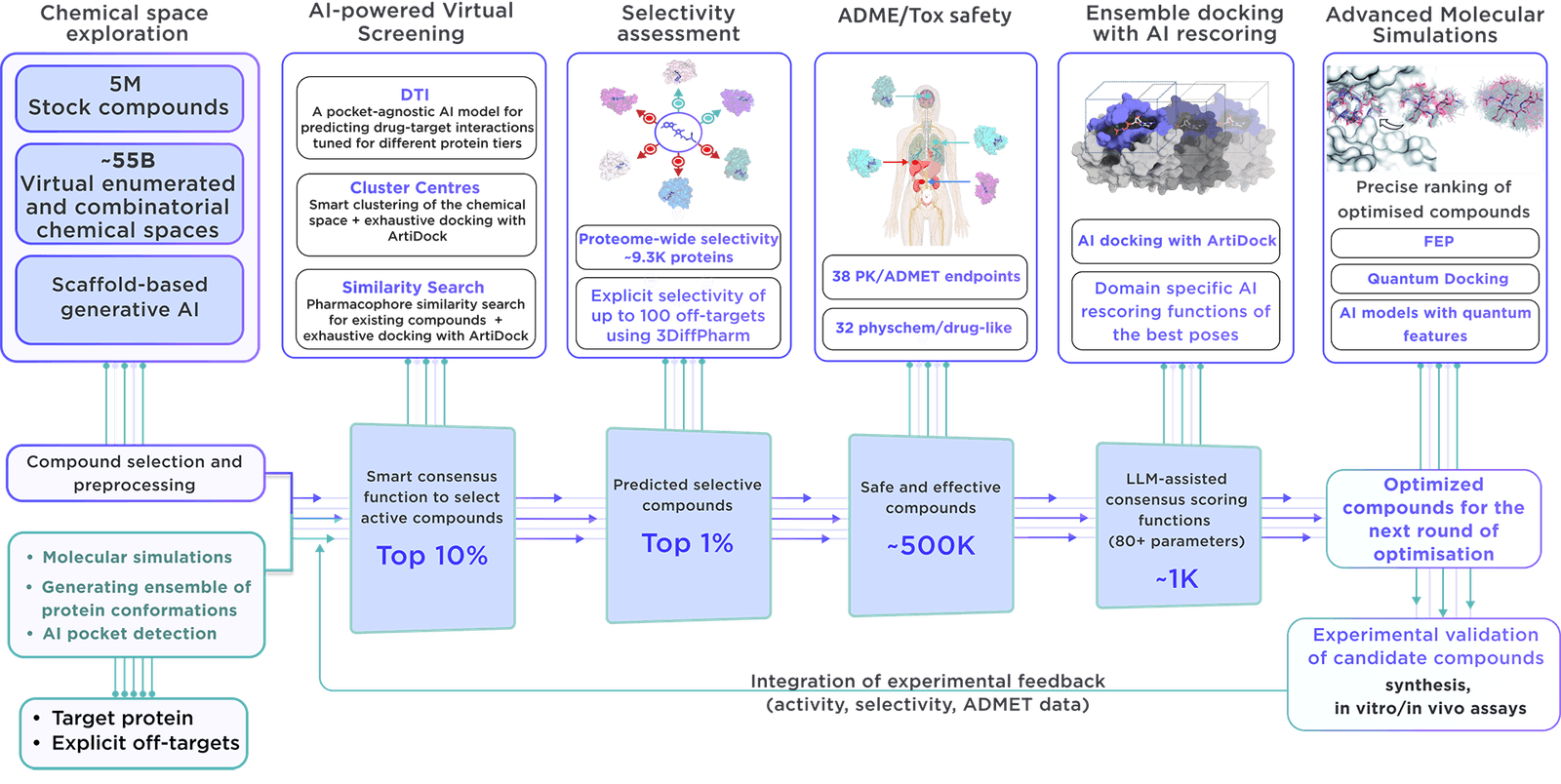Focused On-demand Libraries - Receptor.AI Collaboration
Explore the Potential with AI-Driven Innovation
The specialised, focused library is developed on demand with the most recent virtual screening and parameter assessment technology, guided by the Receptor.AI drug discovery platform. This approach exceeds the capabilities of traditional methods and offers compounds with higher activity, selectivity, and safety.
The compounds are cherry-picked from the vast virtual chemical space of over 60B molecules. The synthesis and delivery of compounds is facilitated by Reaxense.
In the library, a selection of top modulators is provided, each marked with 38 ADME-Tox and 32 parameters related to physicochemical properties and drug-likeness. Also, every compound comes with its best docking poses, affinity scores, and activity scores, providing a comprehensive overview.
We use our state-of-the-art dedicated workflow for designing focused libraries.
Utilising molecular simulations, our approach thoroughly examines a wide array of proteins, tracking their conformational changes individually and within complexes. Ensemble virtual screening enables us to address conformational flexibility, revealing essential binding sites at functional regions and allosteric locations. Our rigorous analysis guarantees that no potential mechanism of action is overlooked, aiming to uncover new therapeutic targets and lead compounds across diverse biological functions.
Our library distinguishes itself through several key aspects:
- The Receptor.AI platform integrates all available data about the target protein, including past experiments, literature data, known ligands, structural information and more. This consolidated approach maximises the probability of prioritising highly relevant compounds.
- The platform uses sophisticated molecular simulations to identify possible binding sites so that the compounds in the focused library are suitable for discovering allosteric inhibitors and the binders for cryptic pockets.
- The platform integrates over 50 highly customisable AI models, which are thoroughly tested and validated on a multitude of commercial drug discovery programs and research projects. It is designed to be efficient, reliable and accurate. All this power is utilised when producing the focused libraries.
- In addition to producing the focused libraries, Receptor.AI provides services and end-to-end solutions at every stage of preclinical drug discovery. The pricing model is success-based, which reduces your risks and leverages the mutual benefits of the project's success.
Receptor.AI
Q9Y2Q5
UPID:
LTOR2_HUMAN
ALTERNATIVE NAMES:
Endosomal adaptor protein p14; Late endosomal/lysosomal Mp1-interacting protein; Late endosomal/lysosomal adaptor and MAPK and MTOR activator 2; Mitogen-activated protein-binding protein-interacting protein; Roadblock domain-containing protein 3
ALTERNATIVE UPACC:
Q9Y2Q5; Q5VY97; Q5VY98; Q5VY99

